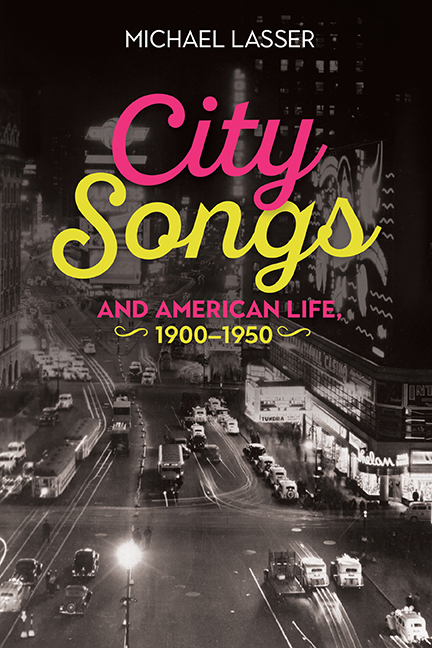Book contents
- Frontmatter
- Dedication
- Epigraph
- Contents
- Notes to the Reader
- Introduction: Encountering the City
- 1 The City's Clangor
- 2 Broadway's Melody
- 3 Harlem's Renaissance
- 4 Recordings, Radio, and Talkies
- 5 Starting the Century
- 6 The Flapper and the Jazz Age
- 7 The Great Depression
- 8 World War II
- Afterword
- Notes
- Bibliography
- Miscellaneous Endmatter
6 - The Flapper and the Jazz Age
Published online by Cambridge University Press: 31 August 2019
- Frontmatter
- Dedication
- Epigraph
- Contents
- Notes to the Reader
- Introduction: Encountering the City
- 1 The City's Clangor
- 2 Broadway's Melody
- 3 Harlem's Renaissance
- 4 Recordings, Radio, and Talkies
- 5 Starting the Century
- 6 The Flapper and the Jazz Age
- 7 The Great Depression
- 8 World War II
- Afterword
- Notes
- Bibliography
- Miscellaneous Endmatter
Summary
Millie Dillmount, fresh off the train from Nowheresville, has just arrived in Manhattan. In Thoroughly Modern Millie, the 1967 movie that bears her name, she dresses as if it's 1919 even though it's three years later: a straw hat ringed with make-believe flowers, a modest blouse buttoned to the neck, a skirt to midcalf, and high-laced shoes. But she's nobody's fool. In the opening sequence, she transforms herself into a flapper with a quick wit, an unerring eye, a lithe body, and a fetching eagerness. She bobs her hair, replaces her clothing, and flattens her bosom with a proper bra. As she says, it's her “chests” that keep her beads from lying right. Played by a youthful Julie Andrews, she looks absolutely smashing, and she is ready to take flapperdom by storm.
Millie was one of the throng that moved to New York City after World War I. At the end of the previous decade, a year or two after the Armistice, they joined the doughboys who refused to remain “down on the farm” after they had “seen Paree.” Many of them had little interest in “a rake or plow / And who the deuce can parlez-vous a cow?” (Walter Donaldson, Sam M. Lewis, and Joe Young, “How Ya Gonna Keep ‘Em Down on the Farm,” 1919). In the song, ironically it takes an old farmer named Reuben to understand the migration to the city and anticipate the changes in sexual attitudes as well. He is smart enough to recognize that “wine and women play the mischief / With a boy who's loose with change.” The song mirrored what the 1920 census would soon report: two years after the end of World War I, even though the United States’ population was split down the middle, half rural and half urban, the country was already more industrial than agricultural. In the aftermath of the war, the dramatic changes of the 1920s arrived pell-mell and helter-skelter. As New York City continued to grow, the new decade began with women casting their first ballots and ended with the onslaught of the Great Depression. But for the topsy-turvy twenties, the flapper was the decade-defining figure.
- Type
- Chapter
- Information
- City Songs and American Life, 1900–1950 , pp. 151 - 197Publisher: Boydell & BrewerPrint publication year: 2019



